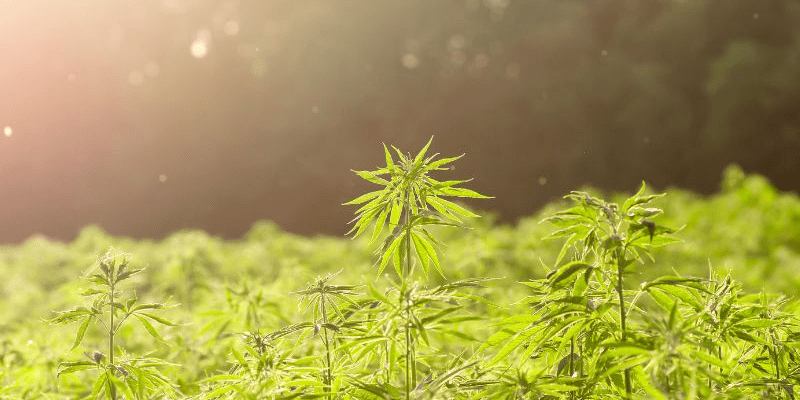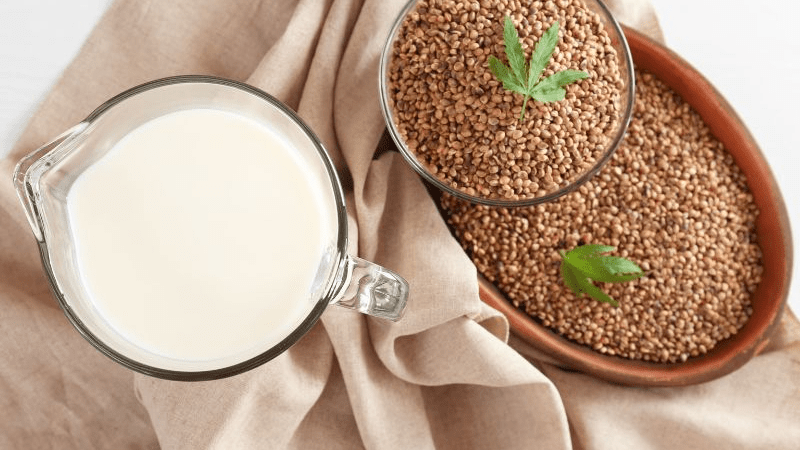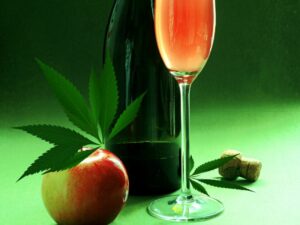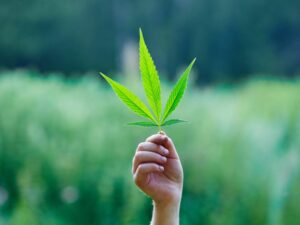What is Hemp and How Does it Differ from the Marijuana Plant

Hemp and marijuana are both plants within the Cannabis genus, but they are distinct in their genetic makeup, physical appearance, and chemical composition.
Hemp is a strain of the Cannabis plant that is grown for its industrial uses, such as fiber, oil, and seeds. Hemp has a lower concentration of THC (tetrahydrocannabinol), the psychoactive compound responsible for the “high” associated with marijuana. In the United States, hemp is legally defined as any Cannabis plant that contains less than 0.3% THC by dry weight. This means that hemp does not have the same psychoactive effects as marijuana, and it is commonly used for industrial and commercial purposes.
Marijuana, on the other hand, is a strain of the Cannabis plant that is grown for its high THC content and psychoactive effects. Marijuana plants typically have a higher THC concentration than hemp, with some strains containing upwards of 30% THC. Due to its psychoactive effects, marijuana is used primarily for recreational or medicinal purposes.
In terms of physical appearance, hemp plants are typically taller and thinner than marijuana plants, with thinner leaves and branches. Marijuana plants are shorter and bushier, with broader leaves and dense buds.
Exploring Different Varieties of Hemp Plants
There are three different species of hemp cannabis plants: Cannabis sativa, Cannabis indica, and Cannabis ruderalis. These species have different physical and chemical characteristics, and are often used for different purposes.
Cannabis sativa is a tall, thin plant with narrow leaves and a long flowering period. It is typically grown for its fiber, which can be used to make a wide range of products, including clothing, paper, and building materials. Sativa strains of hemp can also be used for oil extraction and CBD production, as they often have higher concentrations of these compounds.
Typically, hemp farmers will choose to grow only female hemp crops when harvesting Cannabis sativa plants for CBD production. This is because female hemp plants produce flowers with a high concentration of cannabinoids, like CBD, when compared to male hemp flowers. Additionally, in order for hemp derived products to comply with federal law in the United States they must contain less than 0.3% delta-9 THC by dry weight. Since female plants typically contain higher CBD content and lower THC content than male plants, they are ideal for hemp farmers looking to ensure maximum CBD production in their crop.
Cannabis indica is a shorter, bushier plant with wider leaves and a shorter flowering period than Cannabis sativa. It is often grown for its psychoactive properties, as it has higher concentrations of THC than sativa strains. However, indica strains of hemp can also be used for CBD and CBG production, as well as for fiber and seed production.
Cannabis ruderalis is a smaller, less common species of hemp that is often used for breeding purposes. It has a shorter growing period than sativa and indica strains, and is often used to create auto-flowering hemp varieties that do not require careful control of light cycles. Ruderalis strains of hemp typically have lower concentrations of THC and other cannabinoids than sativa and indica strains, but they may still be used for CBD and CBG production.
Exploring the Potential Benefits of Various Hemp Varieties
There are many potential benefits of various hemp varieties, as each variety has its own unique characteristics and uses. Here are some examples of the potential benefits of different hemp varieties:
High-CBD Hemp Strains
These strains are often used for medicinal purposes, as CBD has been shown to have potential health benefits such as reducing anxiety, relieving pain, and improving sleep.
High-fiber Industrial Hemp Strains
These strains are often used for industrial purposes, such as paper and fabric production. Hemp fiber is strong, durable, and environmentally friendly, making them a popular choice for eco-conscious consumers.
High-Seed Hemp Strains
These strains are often used for culinary purposes, as hemp seeds are rich in nutrients such as protein, fiber, and omega-3 fatty acids. Hemp seeds can be used in a variety of recipes, such as salads, smoothies, and baked goods.
Low-THC Hemp Strains
These strains are often used for medicinal purposes, as they have the potential to provide the health benefits of CBD products without the psychoactive effects of THC. Low-THC hemp strains may be used to treat conditions such as epilepsy, chronic pain, and anxiety.
By carefully selecting and cultivating different varieties of hemp, growers and manufacturers can create a wide range of products that cater to the needs of consumers in various industries, from medicine to agriculture to food production.
Using Hemp for a Variety of Applications: Clothing, Rope, Paper & More

Hemp plants have a long history of use in various industries due to their versatile nature and numerous beneficial properties. Here are some examples of different varieties of hemp:
Textiles
Hemp has been used for textiles for thousands of years, thanks to its strong, durable, and versatile fibers. Hemp plants are typically harvested when the fibers in the stalks are at their strongest. The stalks are cut and then left to dry in the field. The dried hemp stalks are then subjected to a process called retting, which involves soaking the stalks in water to break down the natural pectin that binds the fibers together. This can be done in a variety of ways, such as in a pond or stream, or using specialized machinery.
Once the stalks have been retted, they are put through a machine called a breaker, which separates the outer bark from the inner fibers. This produces long, strong fibers that can be used for textiles. The fibers are then subjected to a process called scutching, which involves beating the fibers to remove any remaining bark or impurities. The fibers are then combed and aligned using a process called hackling, which produces long, fine strands of hemp fiber that are ready for spinning into yarn.
The hemp fibers are spun into yarn using spinning machines, which can produce a range of different yarn thicknesses and qualities depending on the intended use. The hemp yarn is then woven or knitted into fabrics using specialized looms or knitting machines. Hemp fabrics can be used for a wide range of applications, such as clothing, upholstery, and home textiles.
Hemp fiber is incredibly strong and durable, making it an ideal material for producing textiles such as clothing, rope, and paper. Hemp textiles are also environmentally friendly, as they require fewer pesticides and fertilizers than other crops, making them a popular choice for eco-conscious consumers.
Construction Materials
Hemp is a versatile plant that can be used to produce a variety of construction materials, including:
Hempcrete: Hempcrete is a type of building material made by mixing hemp shivs (the woody core of the hemp plant) with lime and water. The resulting material is lightweight, strong, and has excellent insulating properties. Hempcrete is also eco-friendly, as it is made from natural materials that are renewable and biodegradable.
Insulation: Hemp fibers can also be used to produce insulation materials, such as batts or loose-fill insulation. Hemp insulation is eco-friendly, non-toxic, and has excellent insulating properties, making it an attractive choice for eco-conscious builders.
Building panels: Hemp fibers can be combined with other materials to produce building panels, such as hemp fiberboard or hemp plywood. These panels are strong, lightweight, and have excellent insulating properties.
Bio-composites: Hemp fibers can be combined with other materials, such as bioplastics or bio-resins, to produce bio-composites. These materials can be used in a variety of construction applications, such as flooring, roofing, and wall cladding.
Geotextiles: Hemp fibers can also be used to produce geotextiles, which are fabrics used for soil stabilization, erosion control, and drainage applications.
As more research is conducted into the potential uses of hemp in construction, we can expect to see even more innovative applications in the future.
Biofuels
Hemp can be used as a source of biofuels, which are renewable and eco-friendly alternatives to fossil fuels. The two main types of biofuels that can be produced from hemp are biodiesel and ethanol.
Biodiesel is a type of fuel made from vegetable oils or animal fats. Hemp oil can be used as a feedstock to produce biodiesel through a process called transesterification. In this process, the oil is combined with an alcohol (such as methanol) and a catalyst (such as sodium hydroxide) to produce biodiesel and glycerin. Hemp biodiesel can be used in any diesel engine without modification, and has been shown to have lower emissions than petroleum diesel.
Ethanol is a type of alcohol that can be produced by fermenting sugars and starches from plant materials. Hemp can be used as a feedstock for ethanol production, as it contains high levels of cellulose and hemicellulose, which can be converted into sugars. These sugars can then be fermented to produce ethanol. Hemp ethanol can be used as a fuel additive or as a standalone fuel in flexible fuel vehicles.
Overall, hemp biofuels have the potential to be an eco-friendly and sustainable alternative to fossil fuels. As research into biofuels continues, we can expect to see even more innovative uses of hemp in the biofuels industry.
Food and supplements
Hemp seeds and hemp oil are commonly used in a variety of foods and supplements due to their nutritional benefits. Here are some of the ways hemp is used in the food and supplement industry:
Hemp Seeds: Hemp seeds are a rich source of protein, fiber, and essential fatty acids, making them a popular ingredient in health foods. They can be eaten raw, roasted, or ground into a powder and added to smoothies, salads, or baked goods. Hemp seeds are also used to make hemp seed milk, which is a dairy-free alternative to cow’s milk.
Hemp Oil: Hemp oil is extracted from the seeds of the hemp plant and is rich in omega-3 and omega-6 fatty acids, as well as other beneficial compounds like terpenes and flavonoids. It can be used as a cooking oil or added to salads and other dishes as a nutritional supplement.
Hemp Powder: Hemp powder is a dietary supplement made from ground hemp seeds. It is rich in protein, fiber, and various essential fatty acids such as omega-3 and omega-6. It is a rich source of plant-based protein for those who need more protein in their diet, and is often used as a supplement by athletes and fitness enthusiasts.
Hemp Extract: Hemp extract, also known as CBD oil, is derived from the flowers and leaves of the hemp plant. It is used as a dietary supplement to promote relaxation, reduce stress, and alleviate pain and inflammation.
Overall, hemp is a versatile and nutritious ingredient that can be used in a variety of foods and supplements. As more research is conducted into the health benefits of hemp, we can expect to see even more innovative uses of this plant in the food and supplement industry.
Cosmetics
Hemp is becoming a popular ingredient in the cosmetic industry due to its various skin and hair benefits. Here are some of the ways hemp is used in cosmetics:
Hemp Oil: Hemp oil is a natural emollient that can help to hydrate and soothe the skin. It is often used in skincare products like lotions, balms, and serums to improve skin elasticity and reduce dryness and irritation.
Hemp Seed Extract: Hemp seed extract is a rich source of antioxidants, which can help to protect the skin from environmental damage. It is often used in anti-aging products to promote skin firmness and reduce the appearance of fine lines and wrinkles.
Hemp Protein: Hemp protein is rich in amino acids and can help to strengthen and nourish the hair. It is often used in hair care products like shampoos and conditioners to promote hair growth and reduce breakage.
Hemp Essential Oil: Hemp essential oil has a calming and soothing effect on the skin and can help to reduce inflammation and irritation. It is often used in aromatherapy and massage oils to promote relaxation and relieve stress.
Overall, hemp is a versatile and beneficial ingredient in the cosmetic industry. As more research is conducted into the benefits of hemp for the skin and hair, we can expect to see even more innovative uses of this plant in cosmetics.
The Nutritional Benefits of Hemp Seed Oil

Hemp seed oil is a nutritious oil that is derived from the seeds of the hemp plant. Here are some of the nutritional benefits of hemp seed oil:
Rich in Essential Fatty Acids: Hemp seed oil is rich in essential fatty acids, including omega-3 and omega-6 fatty acids. These fatty acids are important for maintaining healthy skin, hair, and nails, as well as supporting brain function and reducing inflammation in the body.
High in Protein: Hemp oil is a good source of plant-based protein, containing all nine essential amino acids that the body cannot produce on its own. This makes it a great addition to a vegetarian or vegan diet.
Contains Vitamins and Minerals: Hemp oil contains a variety of vitamins and minerals, including vitamin E, magnesium, calcium, and iron. These nutrients are important for maintaining healthy bones, muscles, and organs.
May Reduce Inflammation: The essential fatty acids found in hemp oil have anti-inflammatory properties that may help to reduce inflammation in the body. This could be beneficial for people with inflammatory conditions like arthritis or acne.
May Improve Heart Health: Hemp seed oil may help to improve heart health by reducing cholesterol levels and improving blood pressure. The essential fatty acids found in hemp oil can help to lower LDL (bad) cholesterol levels while increasing HDL (good) cholesterol levels.
Overall, hemp seed oil is a nutritious oil that offers a range of health benefits. It can be used as a cooking oil, added to salads and other dishes, or taken as a supplement for its nutritional benefits.
Ascertaining Quality Through Lab Testing Results
In order to ensure the quality and safety of hemp products, it is important to conduct lab testing on the products. Here are some of the ways in which lab testing can help to ascertain the quality of hemp products:
Testing for Cannabinoid Content: Lab testing can be used to determine the cannabinoid content of hemp products, including CBD, THC, and other cannabinoids. This information can help to ensure that the product contains the advertised amount of cannabinoids and is within legal limits for THC content.
Testing for Contaminants: Lab testing can also be used to test for contaminants like pesticides, heavy metals, and residual solvents. This information can help to ensure that the product is safe for human consumption and does not contain harmful substances.
Testing for Terpene Profile: Terpenes are aromatic compounds found in hemp and other plants that can have a range of therapeutic benefits. Lab testing can be used to determine the terpene profile of hemp products, which can help to ensure that the product contains the advertised terpenes and can provide the expected therapeutic effects.
Testing for Microbial Content: Hemp products can be prone to microbial growth if they are not properly processed and stored. Lab testing can be used to test for microbial content, including bacteria, yeast, and mold, to ensure that the product is safe for consumption.
By conducting lab testing on hemp products, manufacturers can ensure that their products are safe, effective, and of high quality. Consumers can also use lab testing results to make informed decisions about which hemp products to purchase and use. It is important to choose products that have been tested by accredited labs and to review the lab testing results before making a purchase.
Understanding Legalities Around Growing, Buying and Selling Hemp

The legal status of hemp in the United States has undergone significant changes in recent years. Here is a brief overview of the legalities around growing, buying, and selling hemp in the US:
Growing Hemp: In 2018, the US government passed the Agriculture Improvement Act, also known as the 2018 Farm Bill, which legalized the production of hemp as an agricultural commodity. This means that farmers are now able to grow hemp as a cash crop, provided they follow certain guidelines, such as growing hemp plants that contain less than 0.3% THC (the psychoactive compound found in marijuana).
Buying and Selling Hemp Products: Hemp products, including CBD oil, are legal to buy and sell in the US, provided they are derived from hemp plants that meet the 0.3% THC threshold. However, it is important to note that the FDA has not yet approved CBD as a food additive or dietary supplement, which means that some restrictions may apply.
State Laws: It is also important to note that while hemp is now legal at the federal level, some states may have their own laws and regulations around the cultivation and sale of hemp. It is important to check state and local laws before growing, buying, or selling hemp.
Licensing and Regulation: While hemp is legal to grow, farmers must obtain the necessary licenses and permits from their state or tribal government before planting. Additionally, hemp production is subject to regulation by state departments of agriculture and other regulatory agencies.
Marijuana vs. Hemp: It is important to note that while hemp and marijuana are both members of the cannabis plant family, they are treated differently under the law. Marijuana is still considered a Schedule I controlled substance under federal law, and is illegal to grow, possess, or sell in most states.
In summary, hemp is now legal to grow, buy, and sell in the US, provided it meets certain guidelines around THC content. However, it is important to check state and local laws, obtain the necessary licenses and permits, and follow all regulations around hemp cultivation, production and sale.
In conclusion, the hemp plant is a remarkable resource with a long and rich history of use in various industries. Its versatility and sustainability make it an increasingly popular choice for a wide range of applications, from textiles to medicine to fuel. As society continues to prioritize eco-friendliness and sustainability, hemp is poised to play an even larger role in the economy and our daily lives. With ongoing research and innovation, we can expect to discover even more uses and benefits of the hemp plant in the years to come. Whether we are looking for more sustainable textiles, eco-friendly building materials, or natural health remedies, hemp has something to offer. As we move towards a more sustainable and responsible future, the hemp plant is a resource that we can count on to help us achieve our goals.



